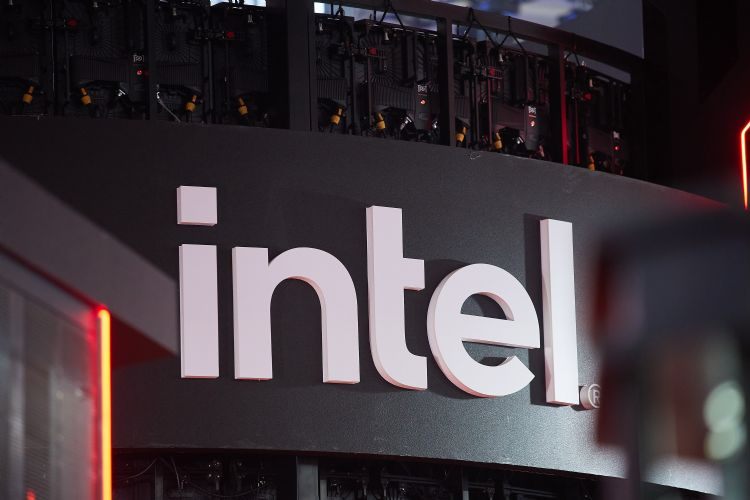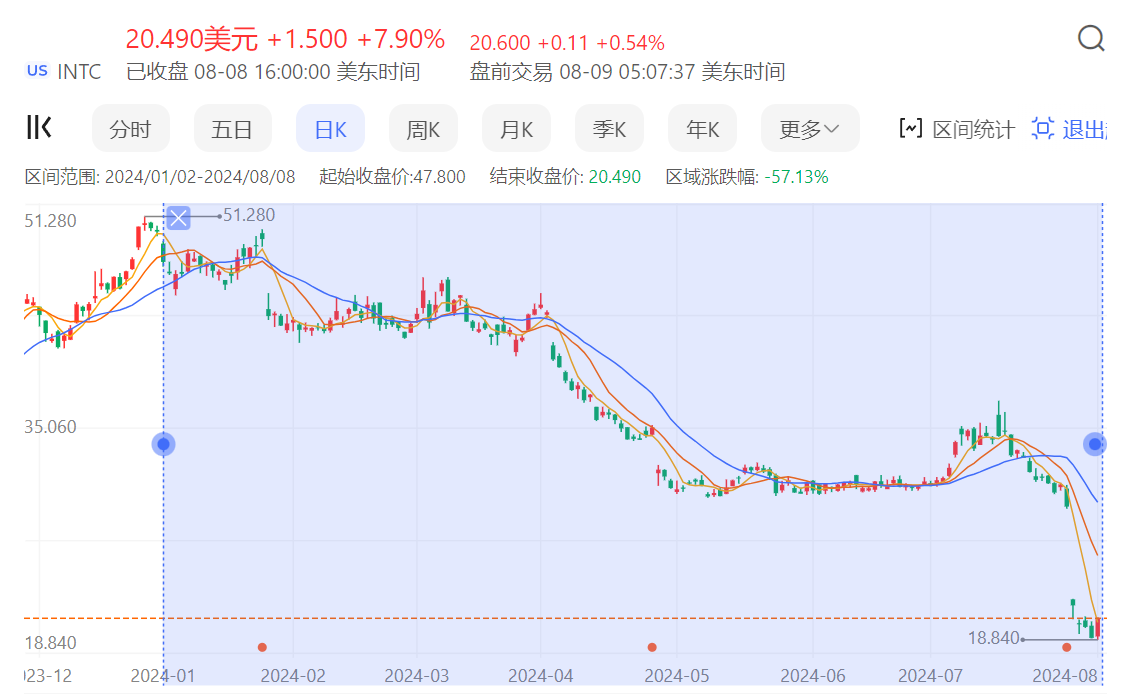今年股价暴跌近60%!愤怒的股东对英特尔提起集体诉讼
作为英特尔的股东之一,大圣路易斯建筑工人养老金信托基金作为主要原告周三对英特尔发起集体诉讼,指控该公司隐瞒了其内部芯片制造业务问题。
作为英特尔的股东之一,大圣路易斯建筑工人养老金信托基金(Construction Laborers Pension Trust of Greater St. Louis)作为主要原告周三对英特尔发起集体诉讼,指控该公司在报告净亏损和大规模裁员15,000人之前隐瞒了其内部芯片制造业务问题。
上周,英特尔公布了第二季度财报及未来展望,结果均不及预期。
数据显示,英特尔第二季度的营收同比下滑1%至128.3亿美元,低于分析师预期的129.4亿美元。净亏损16亿美元,上年同期盈利15亿美元,同比转盈为亏,调整后每股盈利仅为0.02美元。
对于第三季度的指引,英特尔预计营收将在125亿至135亿美元之间,低于分析师预期的143.9亿美元。同时,英特尔预计第三季度调整后每股亏损0.03美元,而市场预期为盈利0.3美元,利润率预计为38%,同比下降近8%。
数据公布的同时,英特尔宣布将将在2025年削减100亿美元的成本,其中主要包括裁员和停止派发股息。
英特尔表示,将裁员15%左右,影响约15,000个工作岗位,同时暂停自1992年以来一直发放的股息,这也是该公司32年来首次暂停派息。
8月2日,即英特尔公布季度业绩,宣布裁员和暂停派息的第二天,其股价暴跌了26%。
在诉讼中,股东指控英特尔隐瞒了内部芯片制造业务的问题,导致第二季度业绩惨淡,进而使得该股市值在一天之内缩水逾320亿美元,股东也因此蒙受损失。

与许多竞争对手不同,英特尔通过其代工厂设计和制造芯片。这一决策帮助英特尔通过《芯片法案》获得了85亿美元的联邦资助。根据诉讼,英特尔告诉投资者,内部制造模式将使英特尔在2025年之前节省80亿至100亿美元。然而,诉状称,这一措施的成本远远超过了投资者的预期。
诉讼写道,“投资者并不知情的是,英特尔的代工业务正在陷入困境,其成本比投资者认为的要高出数十亿美元,事实上,该部门的收入增长在诉讼期间(2024年1月25日至8月1日)出现下降。”
英特尔寄予厚望的代工业务在二季度实现收入43亿美元,同比增加4%,环比下降1%。代工业务的运营亏损进一步扩大至28亿美元,运营利润率为-65.5%。
在第二季度财报的电话会议上,Zinsner表示,英特尔决定更快地将Intel 4和Intel 3芯片从俄勒冈州的工厂转移到爱尔兰的工厂,这将导致短期内成本增加,但后期毛利率会更高。
集体诉讼还将首席执行官Patrick Gelsinger和首席财务官David Zinsner列为共同被告,指控他们发表了“虚假和误导性”的声明,导致公司股价“人为地被抬高”。
诉讼中列举的“误导性”声明就包括2024年1月英特尔发布的一份新闻稿。英特尔的首席财务官Zinsner表示:“我们在第四季度继续提高运营效率,并轻松实现了2023年节省30亿美元的承诺。随着我们实施新的内部制造模式,我们预计将在2024年及以后进一步提高效率,该模式旨在提高透明度和问责制,并为我们的股东资本带来更高的回报。”
股东在诉讼中声称,这些都是“重大虚假和误导性”陈述,未能披露“英特尔的代工业务正遭遇成本激增,需要比投资者预期的更多的资本支出,并导致英特尔在2023年遭受了70亿美元的损失。”
截至8月8日美股收盘,英特尔今年的股价已经下跌接近60%。

·原创文章
免责声明:本文观点来自原作者,不代表Hawk Insight的观点和立场。文章内容仅供参考、交流、学习,不构成投资建议。如涉及版权问题,请联系我们删除。